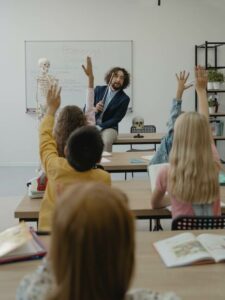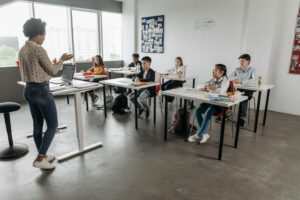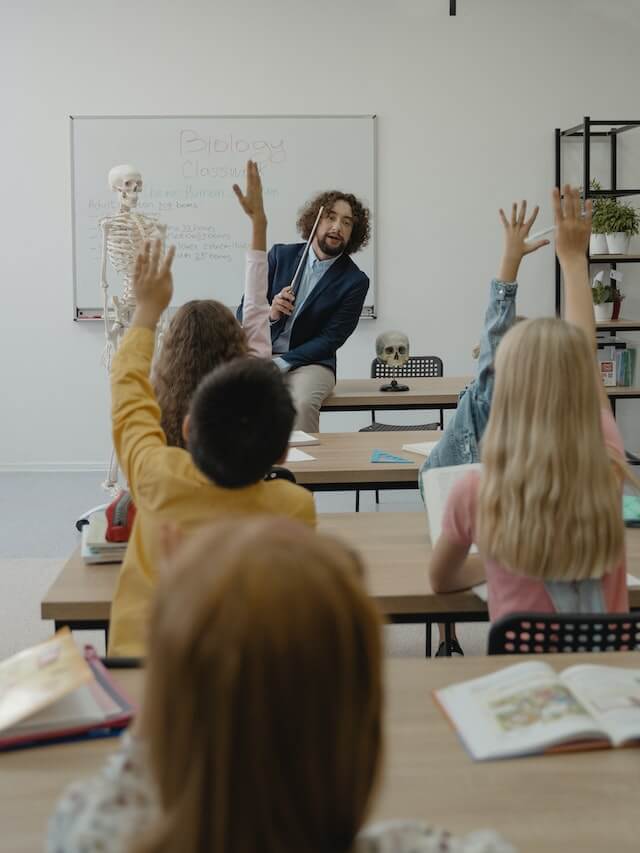One of your primary responsibilities as a teacher should be seeing to it that the specific requirements of each pupil are being satisfied. It is the job of the teacher to recognize each student as an individual with their learning style and preferences and to adapt instruction accordingly. Teachers can assist their pupils in realizing their maximum academic potential if they adopt this mindset.
Understanding Learning Techniques

Understanding student learning styles is the first step to meeting their needs. Instructors must understand and accommodate diverse student learning styles. Many students benefit greatly from visuals like diagrams and films, while others do better with more hands-on exercises. Nonetheless, some individuals learn better by reading and writing.
Visualizing Conversations
Teachers may greatly benefit from the use of visual aids in the classroom when working with students that have a visual learning style. Diagrams, videos, and other visual aids in lessons may help these youngsters, and visual tools may also help kids who struggle with abstract cognition grasp complex subjects.
Implementing Participatory Methods
Educators may include dynamic components in classes for children who benefit most from active participation. Students may benefit from learning by doing in various contexts, including but not limited to scientific investigations, artistic endeavors, and classroom debates. Skills like critical thinking, problem-solving, and teamwork may all be honed via these exercises.
Fostering an Appreciation for Words and Letters
Teachers may accommodate students whose preferred learning method is reading and writing by providing them access to a wide range of reading materials. Teachers can also have pupils show their knowledge via writing assignments. As a result, students may strengthen their writing abilities and enhance their reading comprehension using this method.
Making a Friendly Setting
A welcoming classroom atmosphere is crucial for catering to pupils’ unique requirements. Building a feeling of community and belonging in the classroom is just as important as giving children the tools they need to succeed.
Financing and Supporting Initiatives
Books, digital learning platforms, and other materials may all be made available to students by their teachers. For instance, K-12 online learning platforms give students access to a wealth of supplementary learning resources, including a wide range of online courses. Teachers can best assist their pupils in overcoming challenges if they are given the resources they need to succeed.
Facilitating Social Integration
Promoting classroom camaraderie is an effective strategy for catering to kids’ unique requirements. Teachers may do this via activities like group projects and class discussions and by fostering an environment that welcomes and celebrates students of all backgrounds.
To the extent that they feel safe and accepted at school, pupils are more likely to take an active interest in and be driven by their studies.
Giving Help
At long last, teachers will be able to help kids who are having difficulty. Individualized instruction, additional study time, and psychosocial support fall under this category. Teachers may aid their pupils in succeeding academically by giving them the resources they need to fight and conquer whatever obstacles they encounter.
Instructional Variation

Last but not least, tailoring lessons to each student is essential. This entails adapting instruction and assignments for each student depending on their specific learning style, preference, and aptitude requirements.
Provide a Variety of Courses for Studying
Providing students with a variety of courses to choose from is one strategy for meeting their individual needs. Teachers may differentiate instruction by giving students opportunities to engage in various learning activities, such as those that require them to work alone or in small groups.
Educators can better assist students in finding their optimal learning strategy if they provide them with a variety of alternatives to choose from.
Modifying the Tempo
Changing the lesson’s tempo is another method for catering to students’ unique needs. Some students may benefit from taking their time with the content to maintain interest, while others may thrive faster. Teachers may help all students learn more efficiently if they modify the lesson’s tempo based on the requirements of the class as a whole.
Assignment Changes
At last, teachers can tailor their lessons to each pupil. For pupils with difficulty with a certain assignment, teachers may provide other tasks, while those who need to be challenged further can be given additional ones. Teachers may better support their students’ individual needs by adapting assignments to meet those needs.
Conclusion
In conclusion, meeting each student’s needs is both a duty and an art that requires various skills and resources. Teachers shape students and the world’s thinking.
Recognizing and accommodating different learning styles, establishing a safe and welcoming classroom, personalizing your instruction to each student, and providing the necessary tools will help your students succeed.















